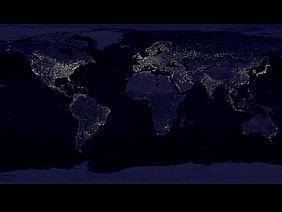Our small planet shines during the night with billions of lights. It is surely unique in our planetary system an indicator that the Earth is inhabited by a species that have achieved a technology stage enabling the biblical order: "let there be light".
Interestingly, observing the Earth and its (our) lights from above can provide quite a bit of information on the evolution of economy, society, poverty and CO2 production on the Planet.
This is the outcome of a study carried out by researchers at Harvard (School of Engineering and Applied Science) and the Environmental Defence Fund. It is based on satellites images taken over the last 21 years.
Observing how the lights change in the various areas of the planet we can derive plenty of information on socio-economic status and its evolution in the 246 observed Countries (including nation states). The processing of data took advantage of GEE, Google Earth Engine, a platform made available (still in progress) by Google to researchers all over the world providing huge computation capabilities.
I found very interesting both the analyses of Satellite images for extracting down to Earth information and the way this processing was made possible. Researchers today have access to an amazing quantity and variety of data and can leverage on, basically free, computation capabilities.
This trend is going to continue in the coming decades and it is likely to change both our understanding of phenomena as well as the way we tackle them.







